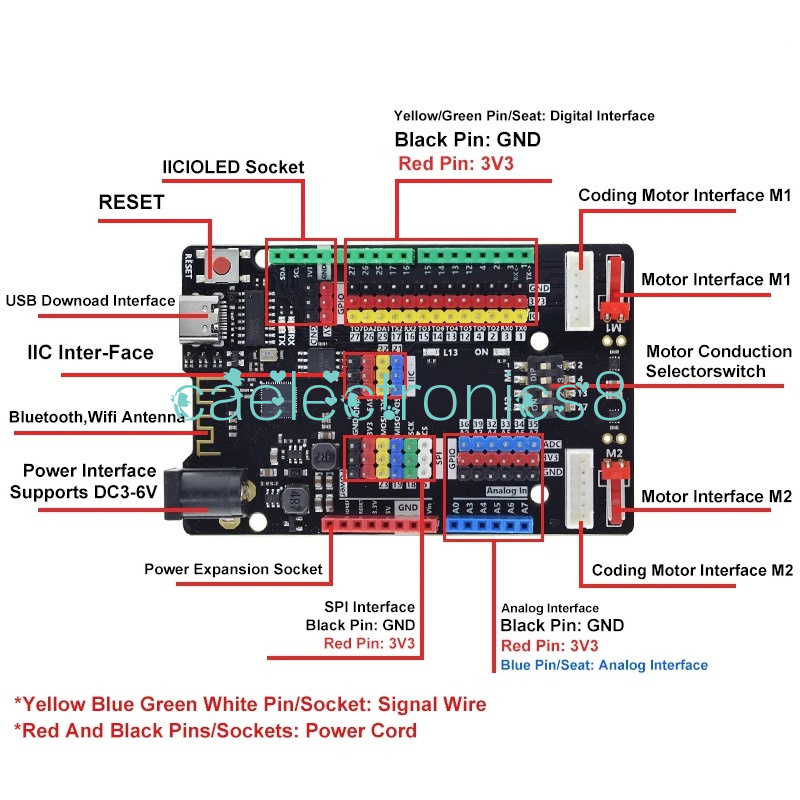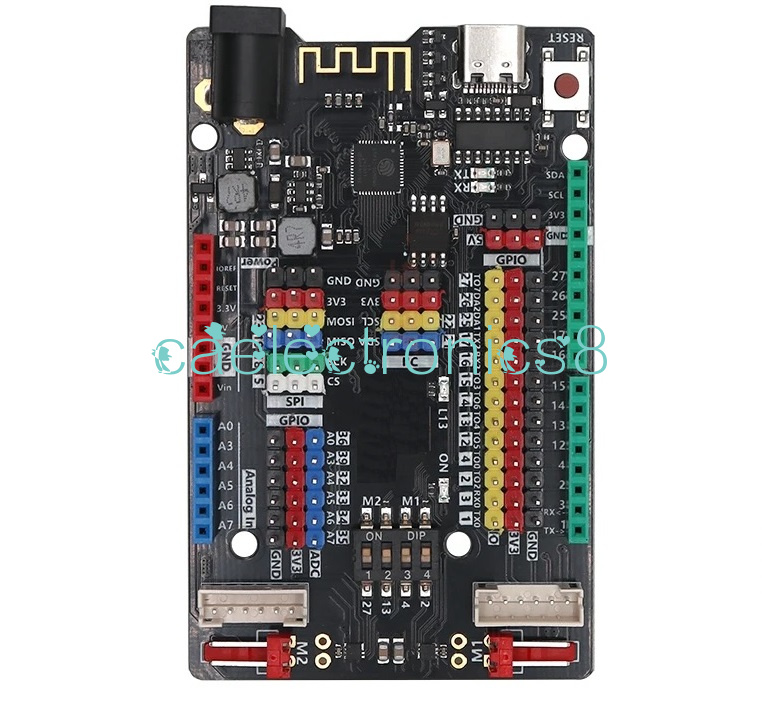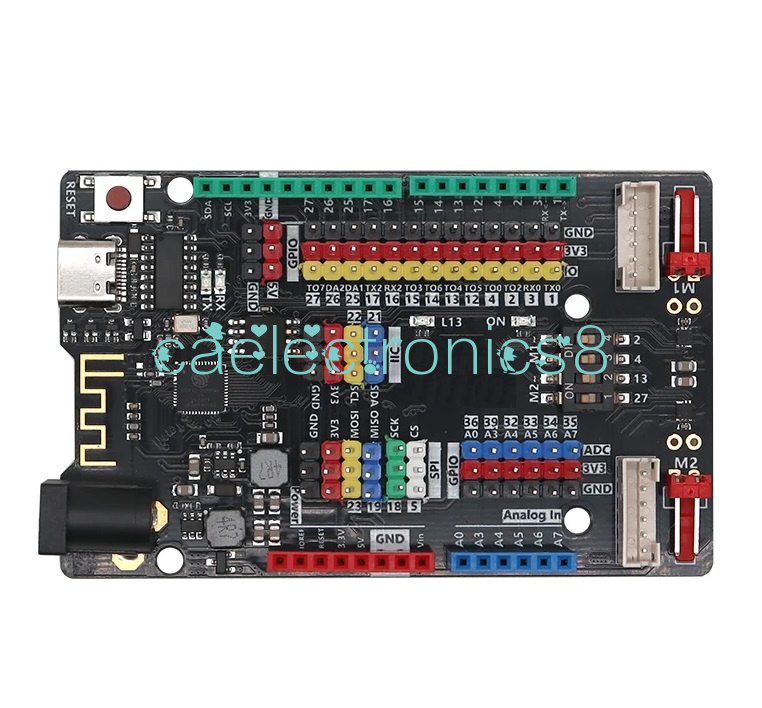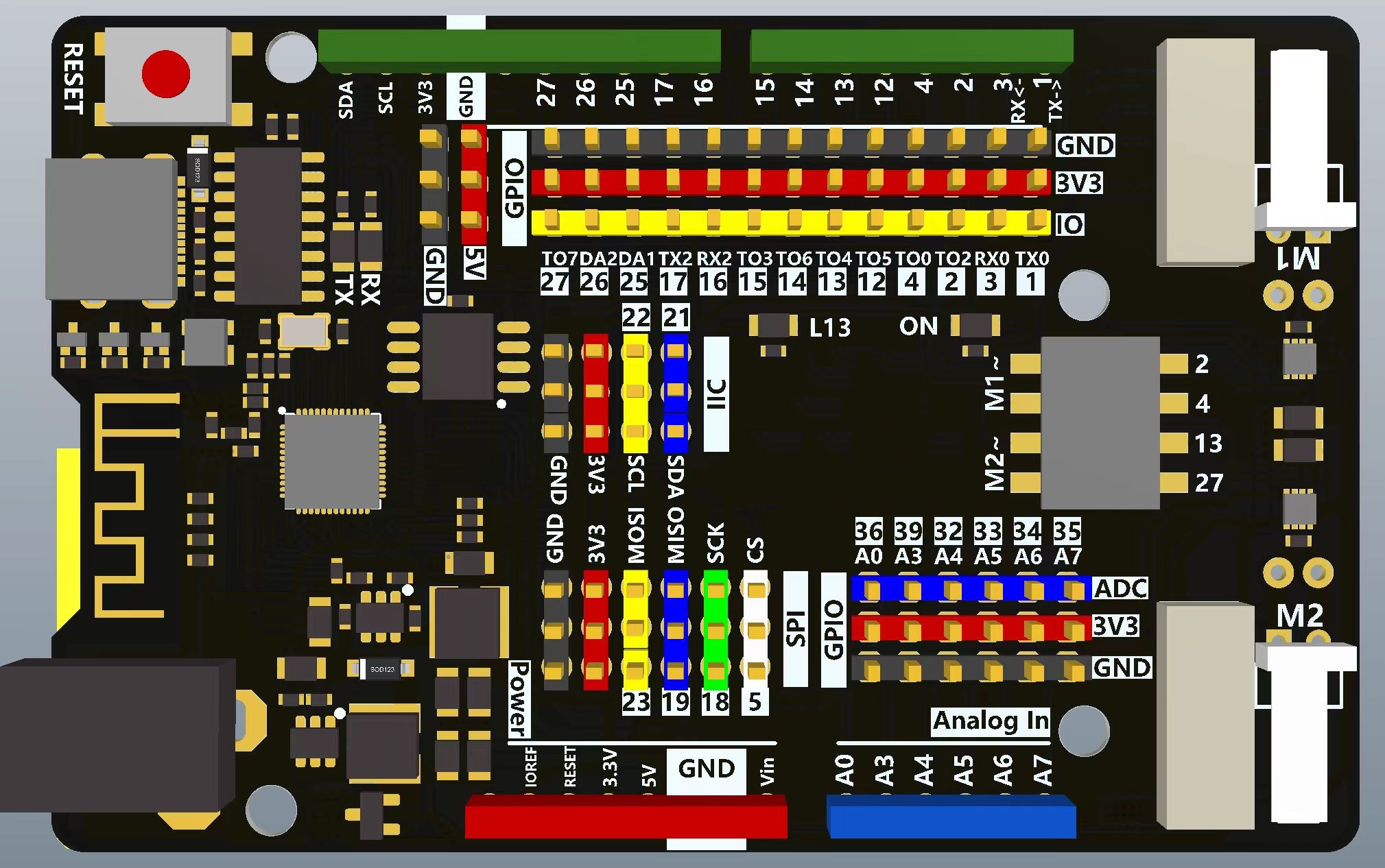ESP32-DO Development Edition is a powerful and flexible development board for IoT, embedded systems and smart devices. It is based on the ESP32 microcontroller with rich expansion interfaces and communication features, as well as compatibility with development environments such as Arduino and MicroPython, enabling developers to get started quickly and carry out development and debugging. Whether you are a beginner or an experienced developer, the ESP32-DO development board is an ideal choice.
The ESP32-Do development board comes with a motor driver and supports two-way motor drive. On-board motor interface KF210 (ordinary motor), Ph2.0-6P (coded motor) two motor interfaces.
1. The stable USB to TTL chip of the onboard CH340 ensures normal serial communication.
2. Support automatic download, no need to manually switch download and run mode.
3. Support development on Windows, MAC and Linux systems
4. Support ESP32 rduino. Flash is available in 8M
ESP32 is a universal Wi-Fi+BT+BLE MCU, which is powerful and versatile. It can be used in low-power sensor networks and demanding tasks, such as voice coding, audio streaming and MP3 decoding.
The core of this development board is the ESP32-D0WDQ6 V3 chip, which has the characteristics of scalability and adaptability. Two CPU cores can be individually controlled or powered on. The adjustment range of clock frequency is from 80 MHz to 240 MHz. Users can cut off the power supply of the CPU and use low-power coprocessors to continuously monitor the status changes of peripherals or whether certain analog quantities exceed the threshold. ESP32 also integrates a variety of peripherals, including capacitive touch sensors, Hall sensors, low noise sensing amplifiers, SD card interfaces, Ethernet interfaces, high-speed SDIO/SPI, UART, I2S, and I2C.
The ESP32-D0WDQ6 has two built-in two low-power Xtensa 32-bit LX6 MCUs. On-chip memory includes: 448 KB ROM for program startup and kernel function calls. 520 KB on-chip SRAM for data and instruction storage. The 8 KB SRAM, or RTC fast memory, can be used for data storage when RTC is started in deep-sleep mode and accessed by the main CPU. 1 kbit eFuse, where 256 bits are dedicated to the system (MAC address and chip settings); The remaining 768 bits are reserved for user applications, which include Flash encryption and chip IDs.
Mind+ does not support the 4Mflash version
# Pinout
// 引入ESP32开发库
#include <Arduino.h>
// 定义LED灯引脚
const int ledPin = 13;
void setup() {
// 初始化LED灯引脚
pinMode(ledPin, OUTPUT);
}
void loop() {
// 控制LED灯每隔一秒亮灭
digitalWrite(ledPin, HIGH);
delay(1000);
digitalWrite(ledPin, LOW);
delay(1000);
}
#Micropython
import machine
import time
led_pin = machine.Pin(13, machine.Pin.OUT)
while True:
led_pin.on() # 点亮L13灯
time.sleep(1) # 延时1秒
led_pin.off() # 关闭L13灯
time.sleep(1) # 延时1秒


































